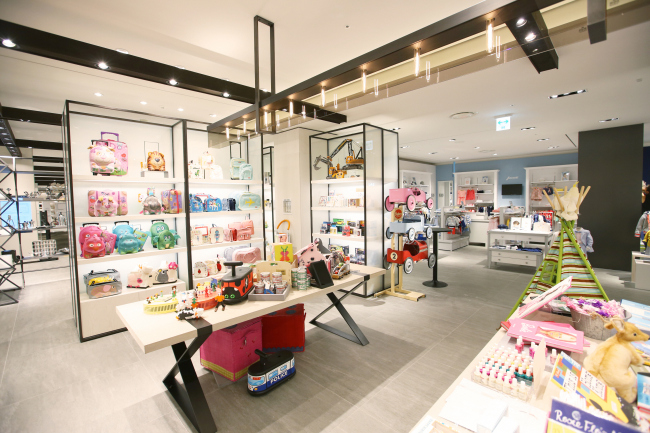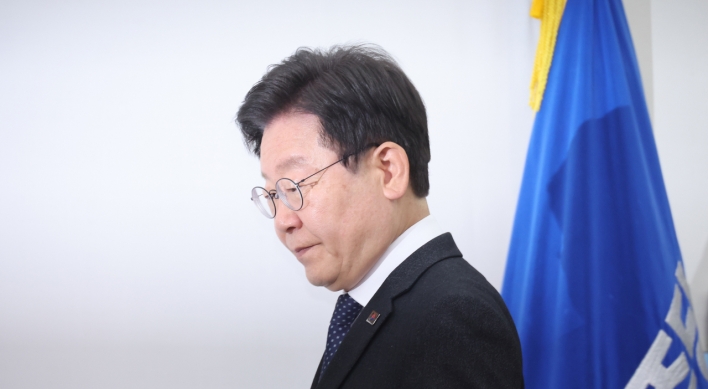[Weekender] Adorning mini-me
From luxury shopping to private education, Korean parents’ spending drives kids’ market
By Korea HeraldPublished : Oct. 10, 2014 - 20:39
Ahn Hyun-ji, a 34-year-old office worker, recently received an unexpected request from her 3-year-old nephew as his birthday gift ― a BMW. He was referring to the BMW 3 Series convertible kids’ car priced at about 500,000 won ($470) here.
“A Pororo toy car was not even on his wish list,” she said. “I first hesitated but decided to invest for the only child of my family.”
Now is the so-called era of “eight pockets for one mouth.” Due to a falling birthrate, almost eight people ― parents, grandparents, aunts and uncles ― feed the family’s only child.
According to the latest OECD data, Korea’s fertility rate was 1.3 children per woman in 2012. It was the second-lowest figure among 27 member nations only behind Portugal.
Having a child is no longer an obligation but an issue of choice. If a couple has chosen to have one, they are willing to spend big on the child. Propelled by the nation’s famous fever for luxury goods, related markets have been soaring recently.
Junior labels of European luxury fashion houses like Burberry, Gucci and Armani have been piling into Korea, one of their top-selling markets overall.
Their sales at major department stores in Seoul are renewing record numbers every year.
More essential items like strollers and bottled water are also going premium to lure fashionable young mothers who are armed with purchasing power and tastes for latest global trends.
“In the past, companies used to sell children’s clothes to a family of two children. But now the opportunities are cut in half and they are choosing to charge double to the parents,” said a press representative of a major retailer on condition of anonymity.
“Amid a shrinking birthrate, businesses have no choice but to go upscale for better profits. Korea is one of the markets where luxury marketing almost always works.”
Korean parents’ renowned focus on education is the culmination of the spending binge.

An average Korean family is known to spend about 20 percent of income on children’s education, compared to 13 percent on food.
The ever-evolving education market ― getting only bigger and bigger ― has created a new breed of part-time jobs and after-school classes.
“English babysitting,” which involves reading an English book to a young child, is one of the most in-demand part-time jobs for college students due to the high pay.
In order to prevent the excessive expansion of private education market here, schools have started putting an emphasis on character education. But the move has created unique markets for art and sports schools teaching Lego building or rope jumping.
Other than that, the fever for high-end education such as international schools and overseas studying shows no sign of abating here.
Experts say Koreans came to care much more about how they look to others after the financial crisis in the late 1990s that hurt not just their wealth but also social pride.
“Young parents are the kids of the families who survived the IMF crisis. Since then, they have experienced the deepening gap between the haves and have-nots,” said Lee Myung-jin, a sociology professor at Korea University.
“They want to reduce unpredictability for their children’s future. To do so, they continue to open their wallets.”
By Lee Ji-yoon (jylee@heraldcorp.com)
“A Pororo toy car was not even on his wish list,” she said. “I first hesitated but decided to invest for the only child of my family.”
Now is the so-called era of “eight pockets for one mouth.” Due to a falling birthrate, almost eight people ― parents, grandparents, aunts and uncles ― feed the family’s only child.
According to the latest OECD data, Korea’s fertility rate was 1.3 children per woman in 2012. It was the second-lowest figure among 27 member nations only behind Portugal.
Having a child is no longer an obligation but an issue of choice. If a couple has chosen to have one, they are willing to spend big on the child. Propelled by the nation’s famous fever for luxury goods, related markets have been soaring recently.
Junior labels of European luxury fashion houses like Burberry, Gucci and Armani have been piling into Korea, one of their top-selling markets overall.
Their sales at major department stores in Seoul are renewing record numbers every year.
More essential items like strollers and bottled water are also going premium to lure fashionable young mothers who are armed with purchasing power and tastes for latest global trends.
“In the past, companies used to sell children’s clothes to a family of two children. But now the opportunities are cut in half and they are choosing to charge double to the parents,” said a press representative of a major retailer on condition of anonymity.
“Amid a shrinking birthrate, businesses have no choice but to go upscale for better profits. Korea is one of the markets where luxury marketing almost always works.”
Korean parents’ renowned focus on education is the culmination of the spending binge.

An average Korean family is known to spend about 20 percent of income on children’s education, compared to 13 percent on food.
The ever-evolving education market ― getting only bigger and bigger ― has created a new breed of part-time jobs and after-school classes.
“English babysitting,” which involves reading an English book to a young child, is one of the most in-demand part-time jobs for college students due to the high pay.
In order to prevent the excessive expansion of private education market here, schools have started putting an emphasis on character education. But the move has created unique markets for art and sports schools teaching Lego building or rope jumping.
Other than that, the fever for high-end education such as international schools and overseas studying shows no sign of abating here.
Experts say Koreans came to care much more about how they look to others after the financial crisis in the late 1990s that hurt not just their wealth but also social pride.
“Young parents are the kids of the families who survived the IMF crisis. Since then, they have experienced the deepening gap between the haves and have-nots,” said Lee Myung-jin, a sociology professor at Korea University.
“They want to reduce unpredictability for their children’s future. To do so, they continue to open their wallets.”
By Lee Ji-yoon (jylee@heraldcorp.com)
-
Articles by Korea Herald




![[Herald Interview] 'Amid aging population, Korea to invite more young professionals from overseas'](http://res.heraldm.com/phpwas/restmb_idxmake.php?idx=644&simg=/content/image/2024/04/24/20240424050844_0.jpg&u=20240424200058)












![[KH Explains] Korean shipbuilding stocks rally: Real growth or bubble?](http://res.heraldm.com/phpwas/restmb_idxmake.php?idx=652&simg=/content/image/2024/04/25/20240425050656_0.jpg&u=)

